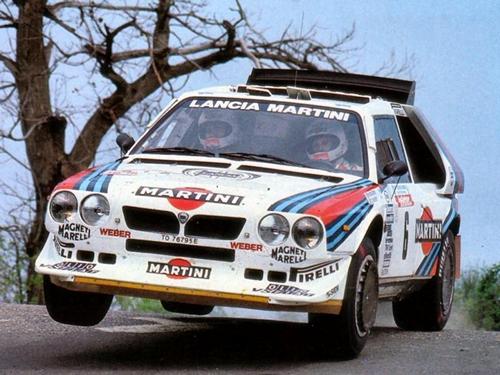Background
The Delta’s competition heritage can be traced back to early 1982 when Abarth (Fiat’s motor sport division) sketched a 4wd Rallycross special of the 037. This special used the front differential from the Fiat 131, although this never even made it to the prototype stage. Even the creation of a Turbo Charged 1600 4wd Delta by a non-factory backed group failed to convince Lancia’s management to consider moving away from the proven design in the rear wheel drive 037. That all changed with the Audi Quattro wining both Drivers and Constructors titles in 1982 and news that Peugeot had built a potent rally car to Group B rules in the form of the 205T16 spurred Lancia to throw weight behind a 4wd rally weapon.
So with a clean sheet and full factory backing Abarth began work on the Delta S4, which was designed to compete in the 2500cc class. The car involved using a design tried and tested on the 037 of front and rear space frame cages mounted onto a central tub, double wishbones and twin dampers. The front cage held the front differential and some of the many radiators, whilst the rear held the longitudinally mounted all new lightweight aluminium engine, 5 speed gearbox and the rest of the radiators.
At the time of its creation the accepted way of achieving maximum power from an engine was by fitting a large turbo charger, this did develop a lot of power, but came at the cost of turbo lag. Abarth took a different tact combining the instant power delivery at lower revs of a supercharger (as used on the 037) with the higher revs power delivery of a turbo and therefore eliminated lag.
The car was officially presented to the world’s press in December 1984, although due to supplier problems the car’s world championship debut would not be until late 1985 on Britain’s Lombard RAC rally. The event saw Henri Toivonen and Markku Alén bring the Delta S4s home in first and second places respectively.
1986 saw the Delta S4 win four events and Markku Alén crowned winner of the Drivers Championship. This was a situation that would only last two weeks, as the FISA would exclude Lancia from the results of the San Remo round due to scrutineering irregularities and so promote Juha Kankkunen to champion and demote Markku Alén to second.
This Car
Due to the cancellation of the Group B category this car only competed in the 1986 World Rally Championship, first in the hands of Miki Biasion on the Portuguese Rally, from which all factory teams withdrew mid event due to the huge Santos crash, then on the Tour de Corse, from which the car was again withdrawn following the death of Henri Toivonen and his co-driver. Its final event in the hands of Miki saw it secure 2nd place on the Acropolis. For the penultimate event of the year, the RAC Rally in GB, the car was passed to Mikael Ericsson, who retired due to engine failure on SS44.
Technical
Engine : four-cylinder, 1.76tr, in-line, transversely mounted in the middle of the car, twin overhead camshafts, four valves per cylinder, 450 bhp
Induction : Fuel Injected, Turbo Charged and Supercharged

